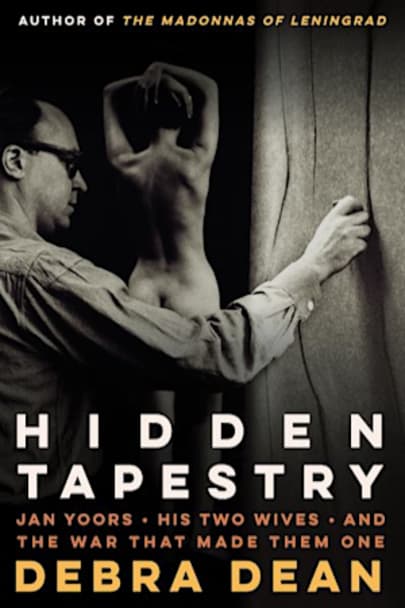Hidden Tapestry reveals the unforgettable story of Flemish American artist Jan Yoors–childhood vagabond, wartime resistance fighter, and polyamorous urban bohemian. At the peak of his fame in the 1970s, Yoors’s photographs and vast tapestries inspired a dedicated following in his adopted Manhattan. Though his intimate friends guessed the rough outline of his colorful life, Hidden Tapestry is … Tapestry is first to detail his astonishing secrets.
At twelve, Jan’s life took an extraordinary and unexpected turn when he wandered into a Roma encampment on the outskirts of his native Antwerp just as the place was being raided. Rather than return home, Jan fled with the Roma and continued to live on-and-off with them and with his own family for several years. As an adult in German-occupied France, Yoors joined the Resistance. Defying repeated arrests and torture by the Gestapo, he worked first as a saboteur and later escorted Allied soldiers trapped behind German lines across the Pyrenees to freedom.
After the war, he married childhood friend Annabert van Wettum and embarked on his career as an artist. When a friend of Annabert’s, Marianne Citroen, modeled for Yoors, Hidden Tapestry reveals how the two began an affair, which led the three to form a polyamorous unit that would last for the rest of their lives. Moving to New York, the trio became part of the bohemian life of Greenwich Village in the 1950s, Marianne being presented as Annabert’s sister.
Told in arresting detail by Debra Dean, best-selling author of The Madonnas of Leningrad, Yoors’s story is a luminous and inspiring account of resilience, resourcefulness, and love.
more



Recognizing the author’s name led me to “Hidden Tapestry” by Debra Dean. Her debut historical novel, “The Madonnas of Leningrad,” is one of my favorite WW II novels.
“Hidden Tapestry: Jan Yoors, His Two Wives, and the War That Made Them One” was like no other book I’ve ever read. It’s a historical biography, but it reads like an unbelievable novel. It’s the biography of Flemish-American artist Jan Yoors, who was known for his giant tapestries.
Yoors was born to a family of Flemish artists in 1922. He grew up in a bohemian liberal home with a deeply engrained cultural respect for art. Throughout his childhood his parents accepted his departures every summer to live among the Gypsies, or Romas. He developed deep admiration for this unique group of people, and many years later, he wrote a memoir about his time living with them. His award-winning 1965 book, “The Gypsies,” was hugely popular. It is still the seminal work on the Romas.
Dean’s research is thorough, and her writing is unbiased and nonjudgmental. His unconventional childhood is followed by an unusual life. During WW II, his war-time resistance activities lead to his arrest and torture by the Gestapo. After WW II Yoors barely scraped by while he single-mindedly pursued his art. His love of art threads its way throughout the story of his life; as does his love for his two wives which appears prominently in this biography. First, there’s his marriage to his childhood pen pal and devoted wife, Annabert.
Then, soon after his marriage, there’s his affair with his wife’s best friend from childhood, Marianne, who was also his nude model. He persuades Annabert to understand his need for both women. Ultimately they both end up devoting their lives to Yoors, forming a polyamorous family of three. The women’s love for Yoors and his art persist for three decades, until his death in 1977 at the age of 55. Though Yoors seems to be devoted only to himself and his art.
In the shadow of post WWII Europe, both wives struggled to keep food on their table, frequently surviving due to the charity of their neighbors. Both wives worked tirelessly and without complaint to help Yoors complete his magnificent, highly acclaimed tapestries. In Greenwich Village, Yoors and his wives created the first tapestry studio of its kind in America in the 1950s. They lived their lives as if they themselves were art, transgressive, dramatic and completely unique. Author Ross King stated, “Jan Yoors has one of the most remarkable artistic stories of the twentieth century.”
Yoors was an incredibly confident and brilliant man. He photographed and filmed his adopted Manhattan, did charcoal art as well as the vast tapestries for which he is most famous. He refused to be pigeon-holed into a 9-5 job or fidelity to his wives.
“Hidden Tapestry” is a worthwhile, thought-provoking read. It’s the kind of book that stays with you long after reading the last page.
About a 20th century Dutch artist who led a fascinating life